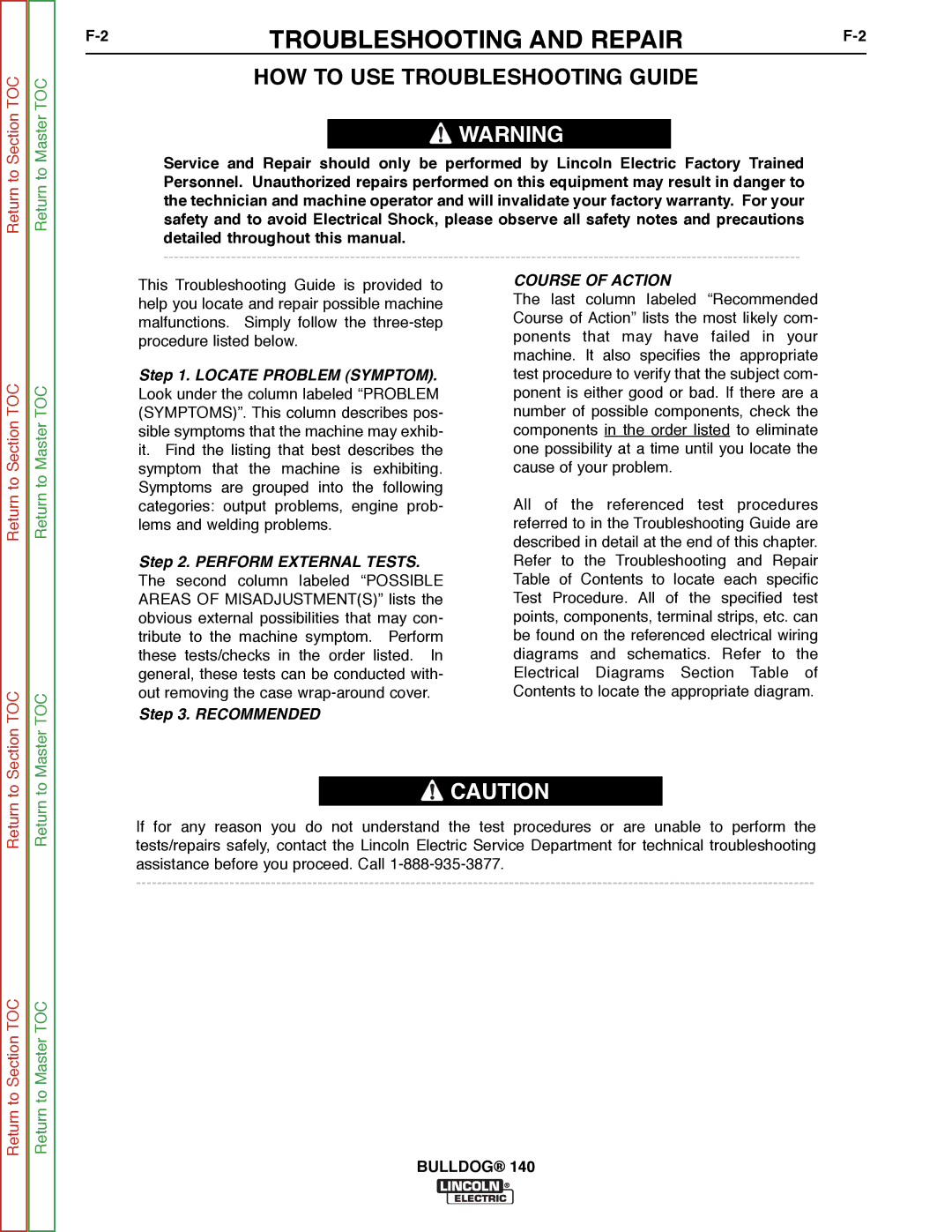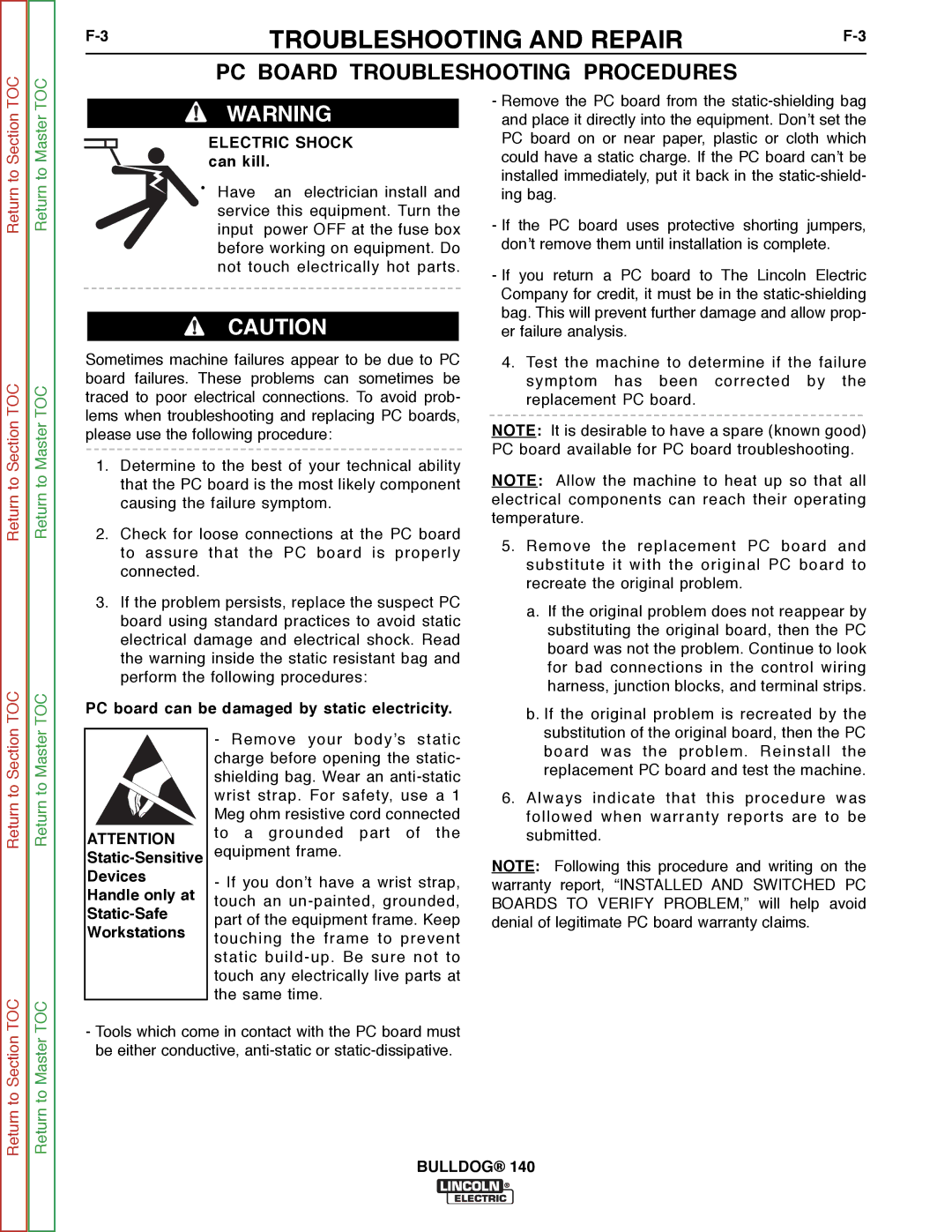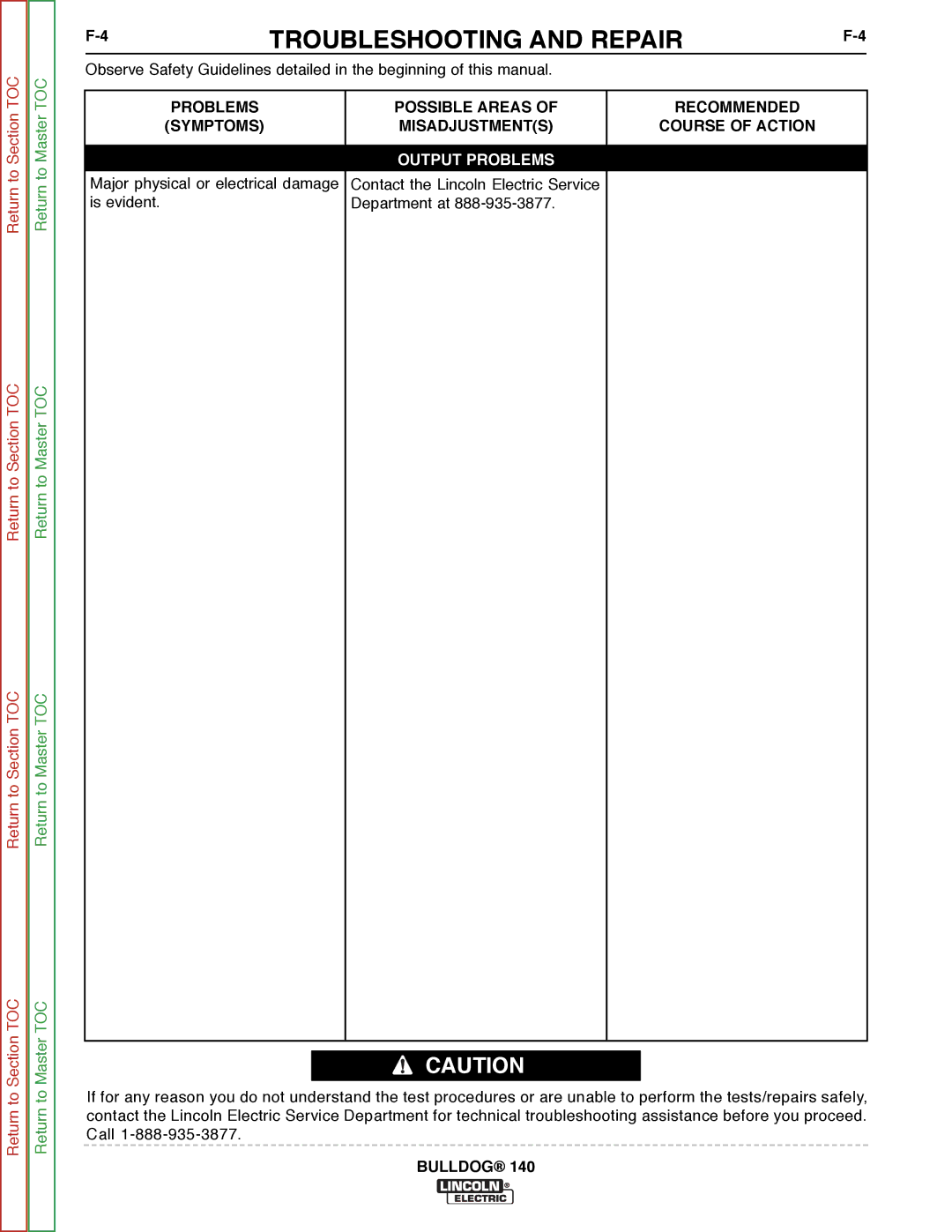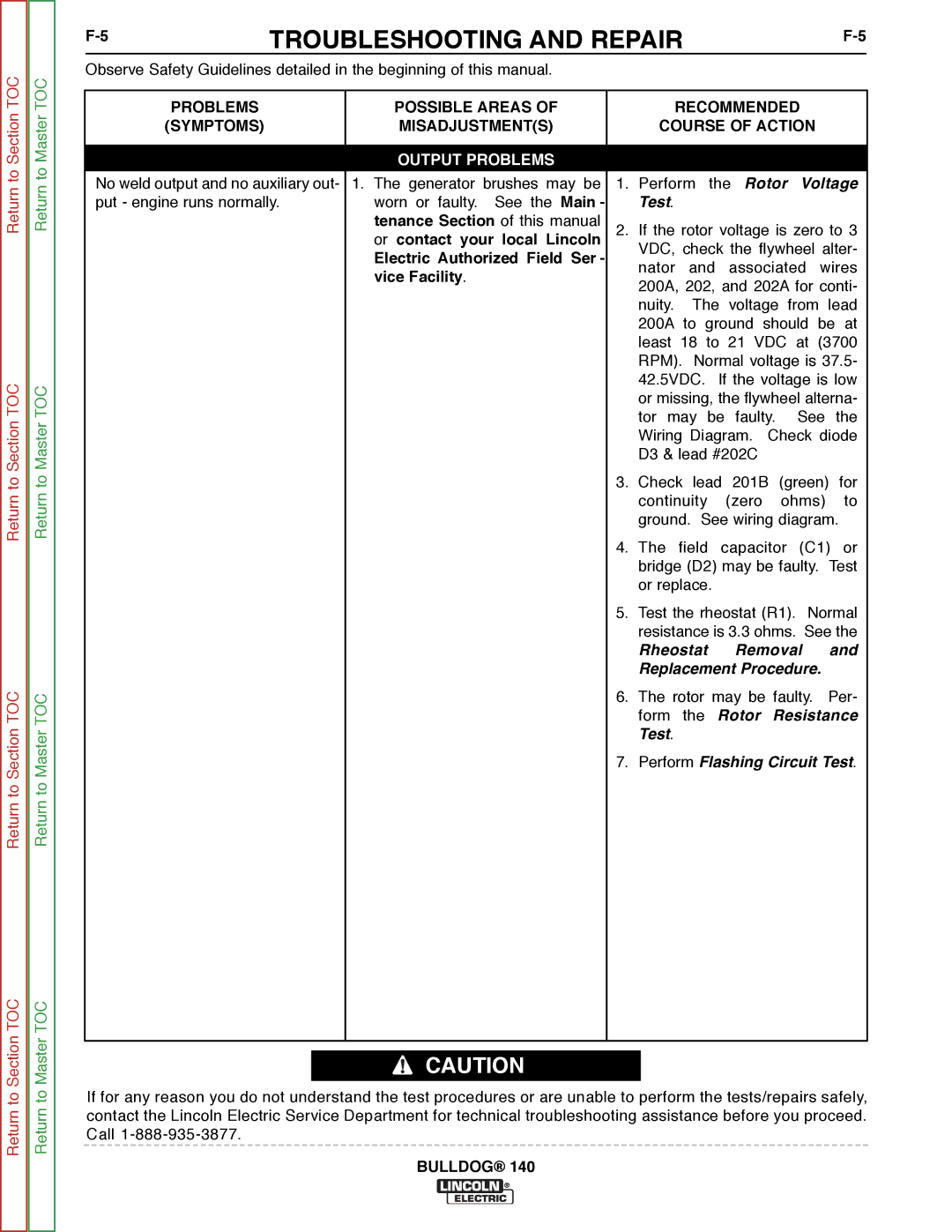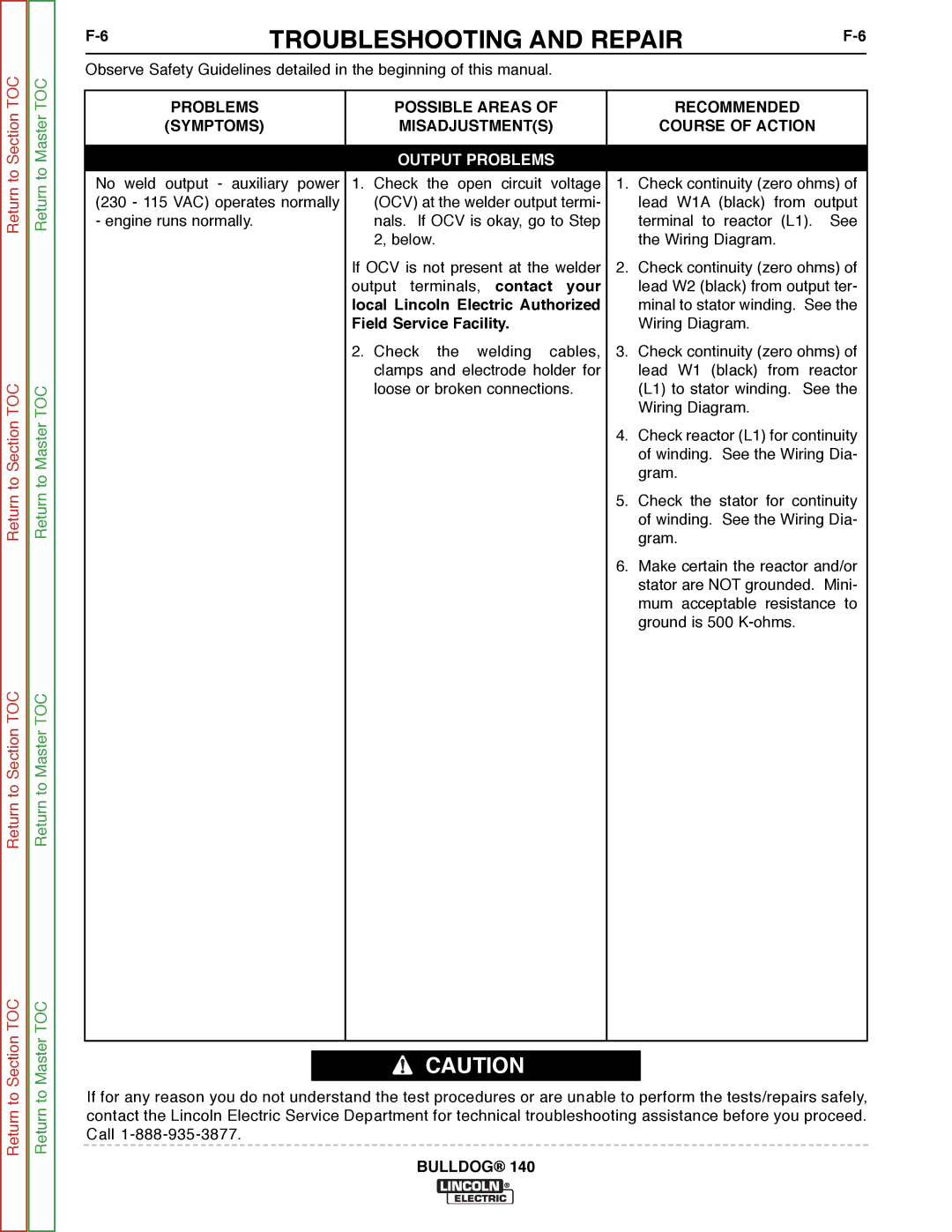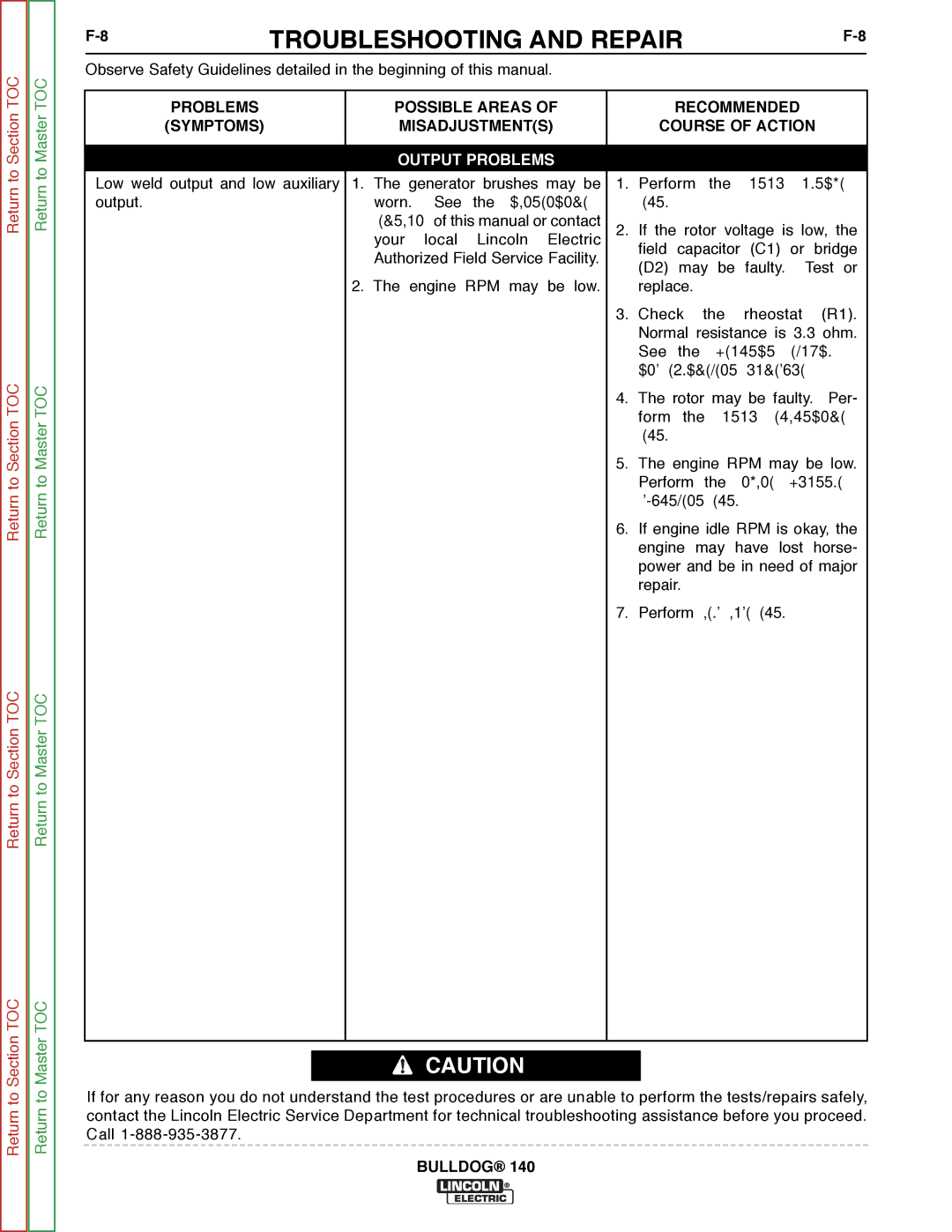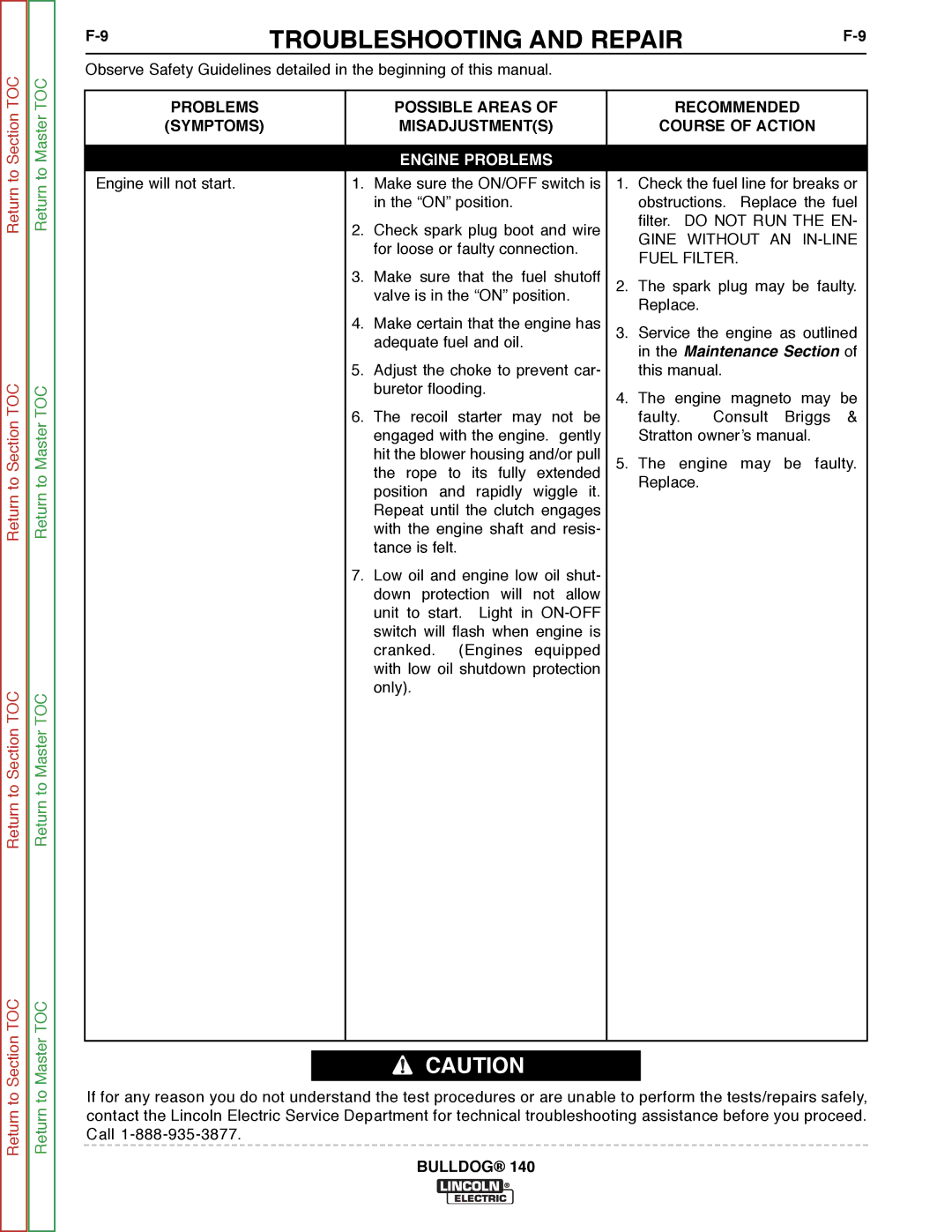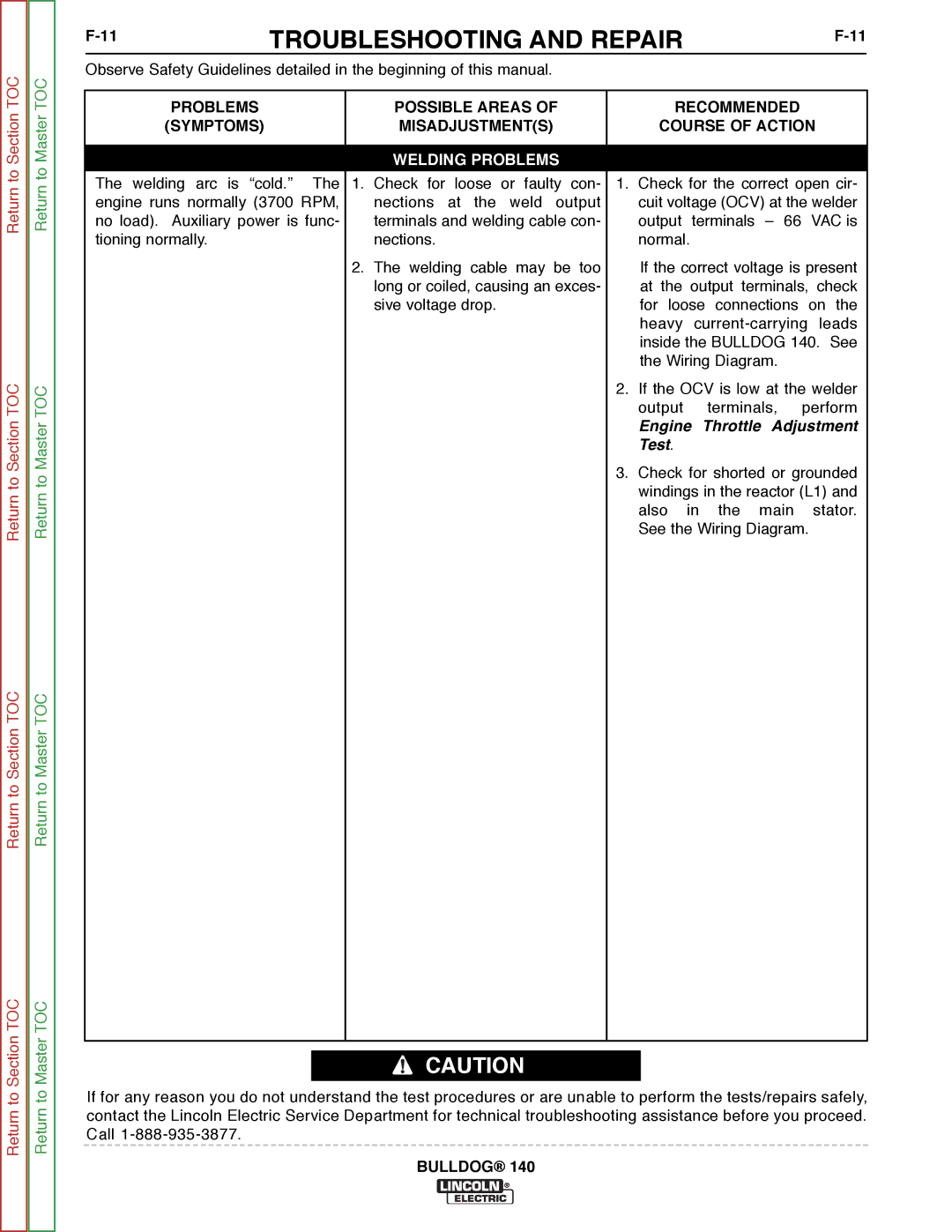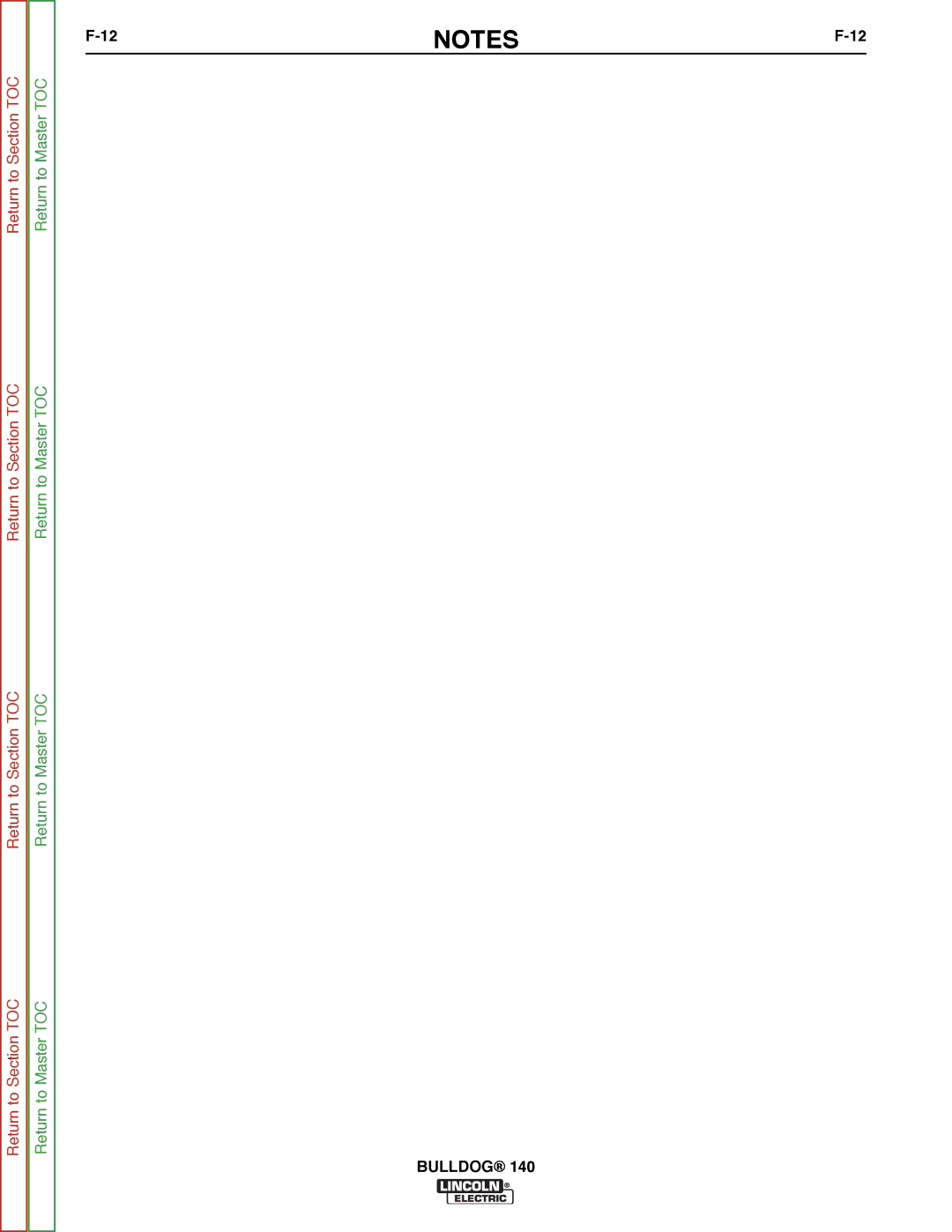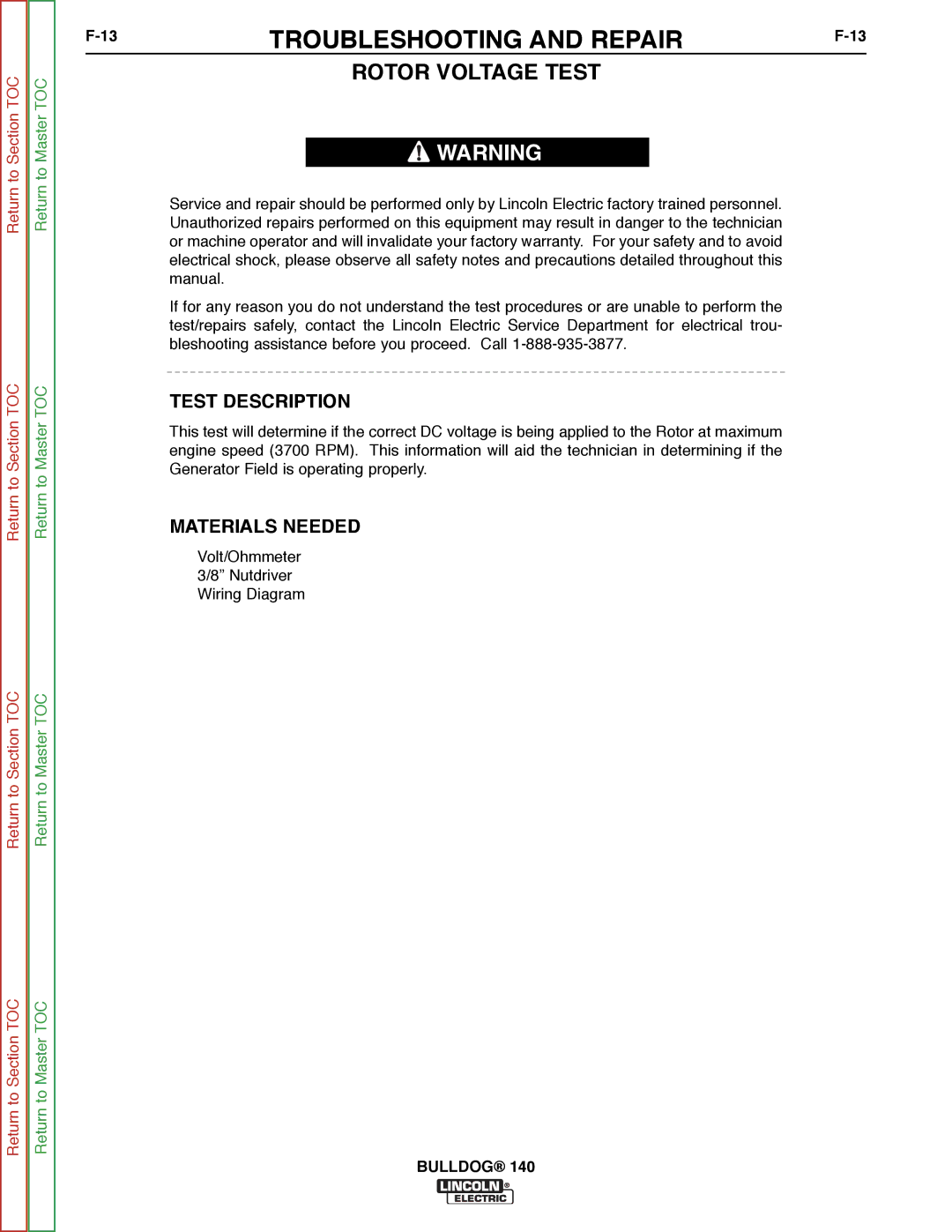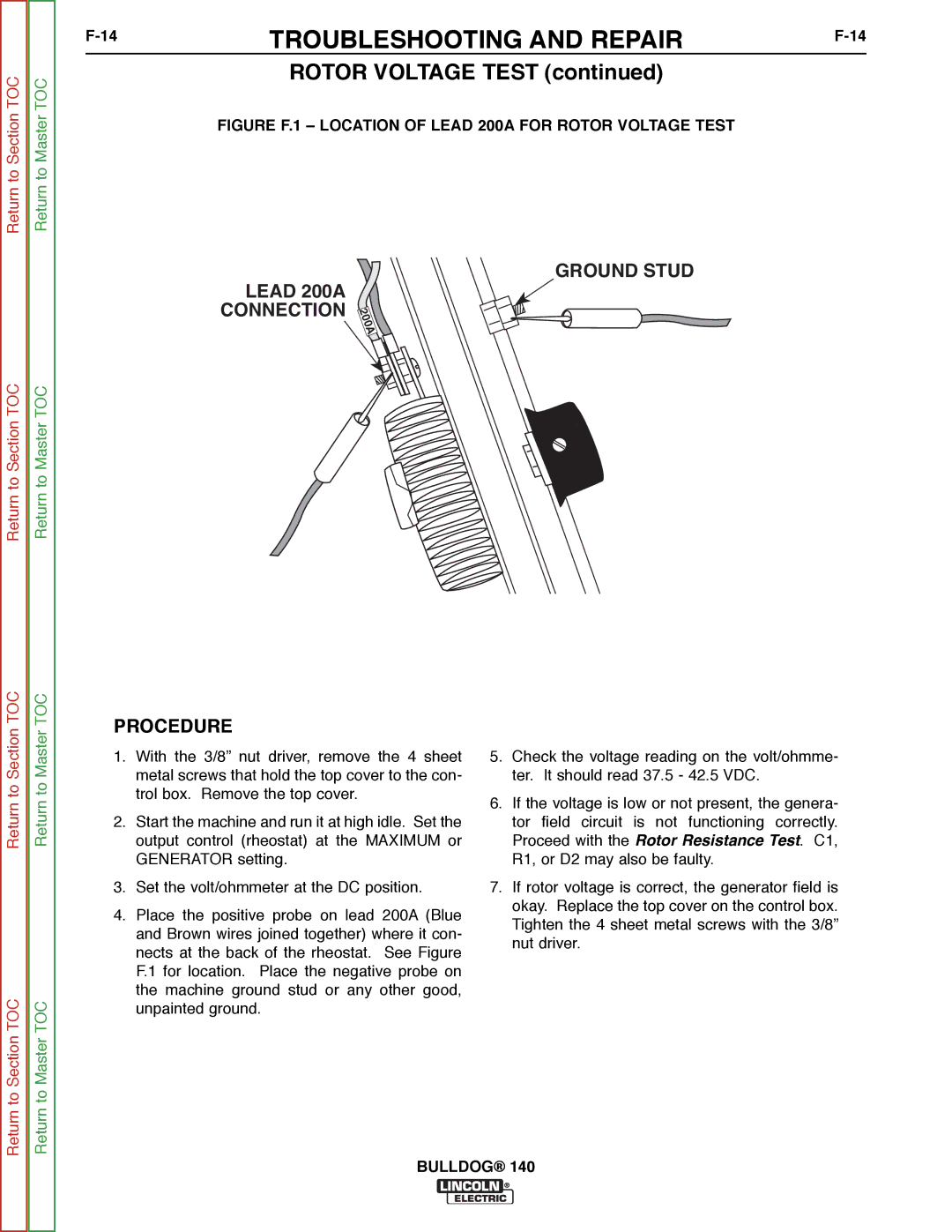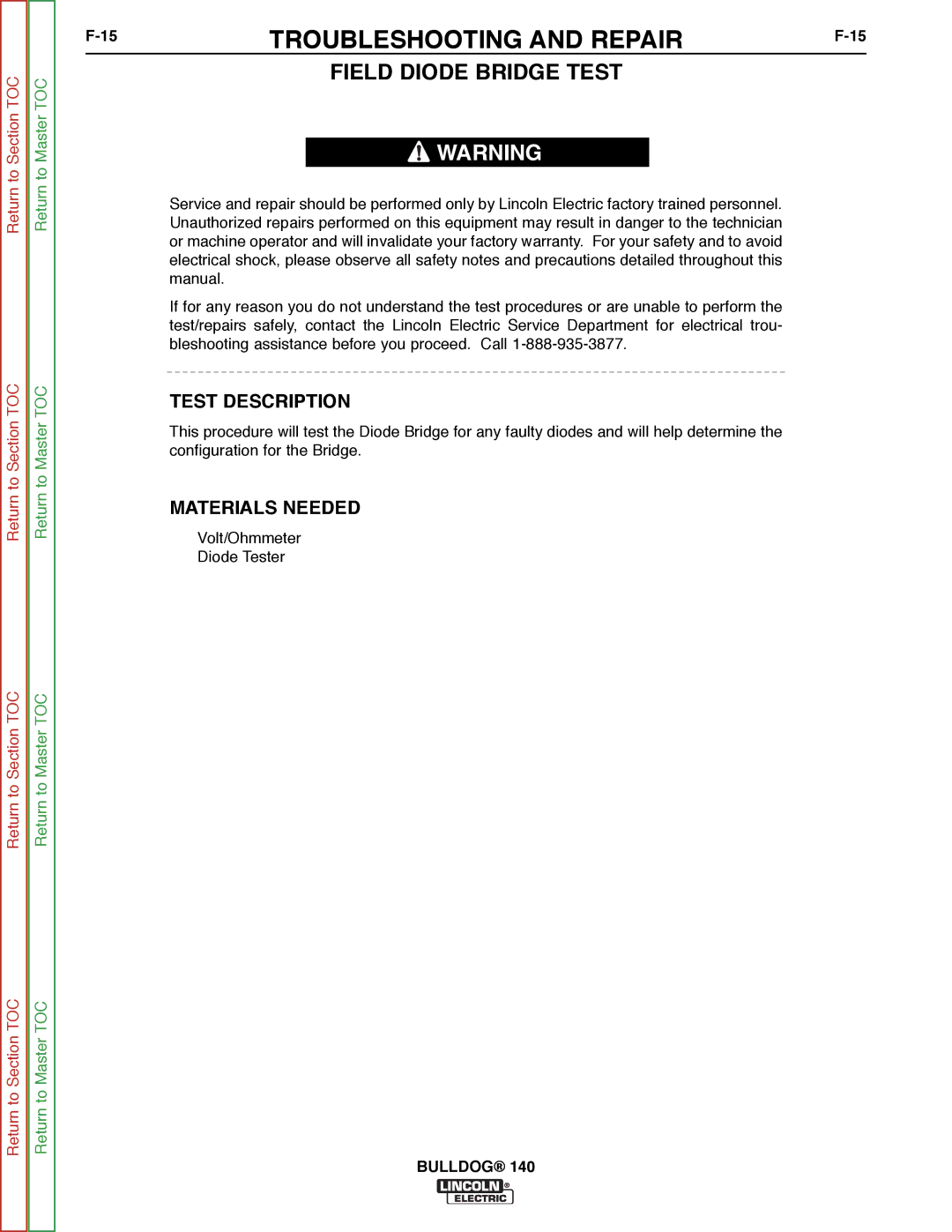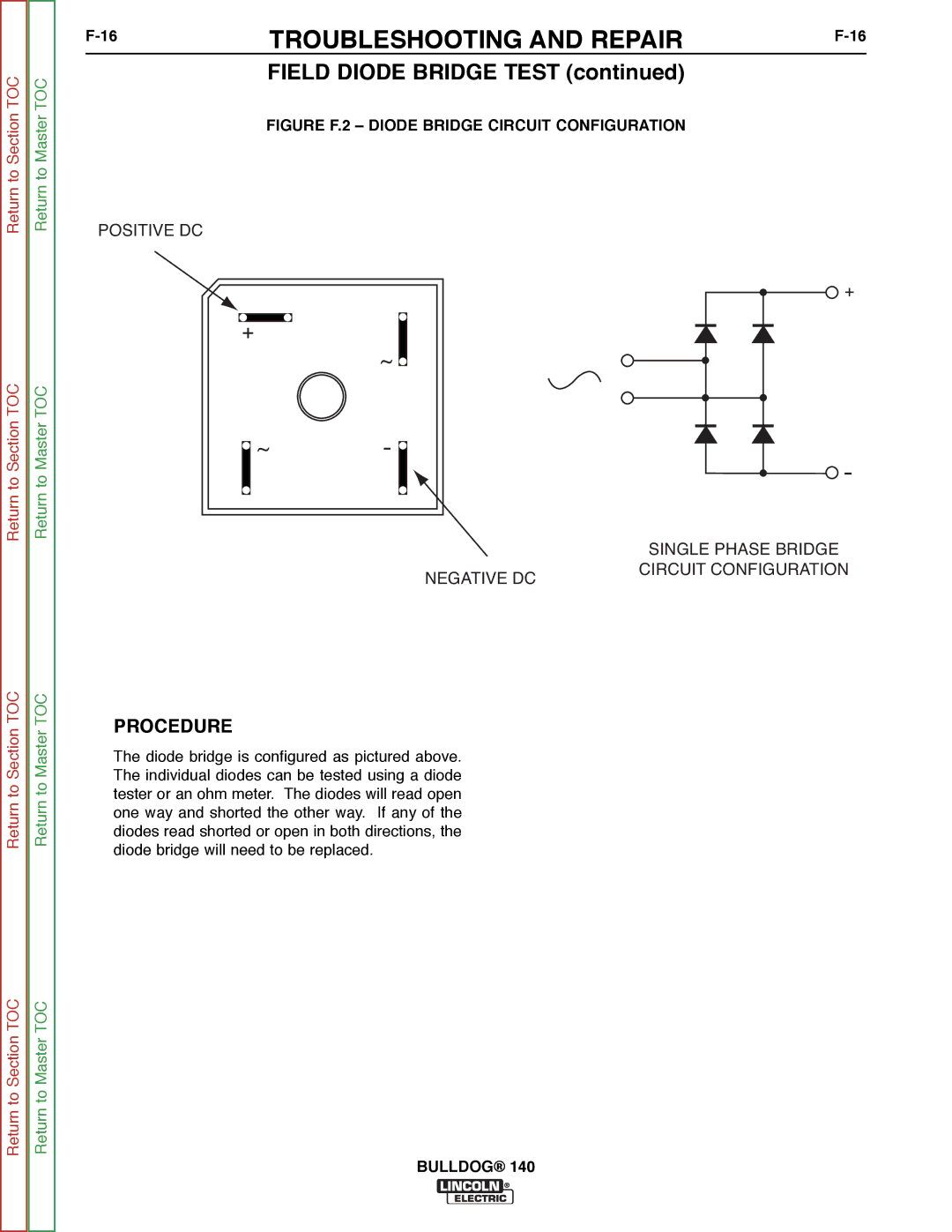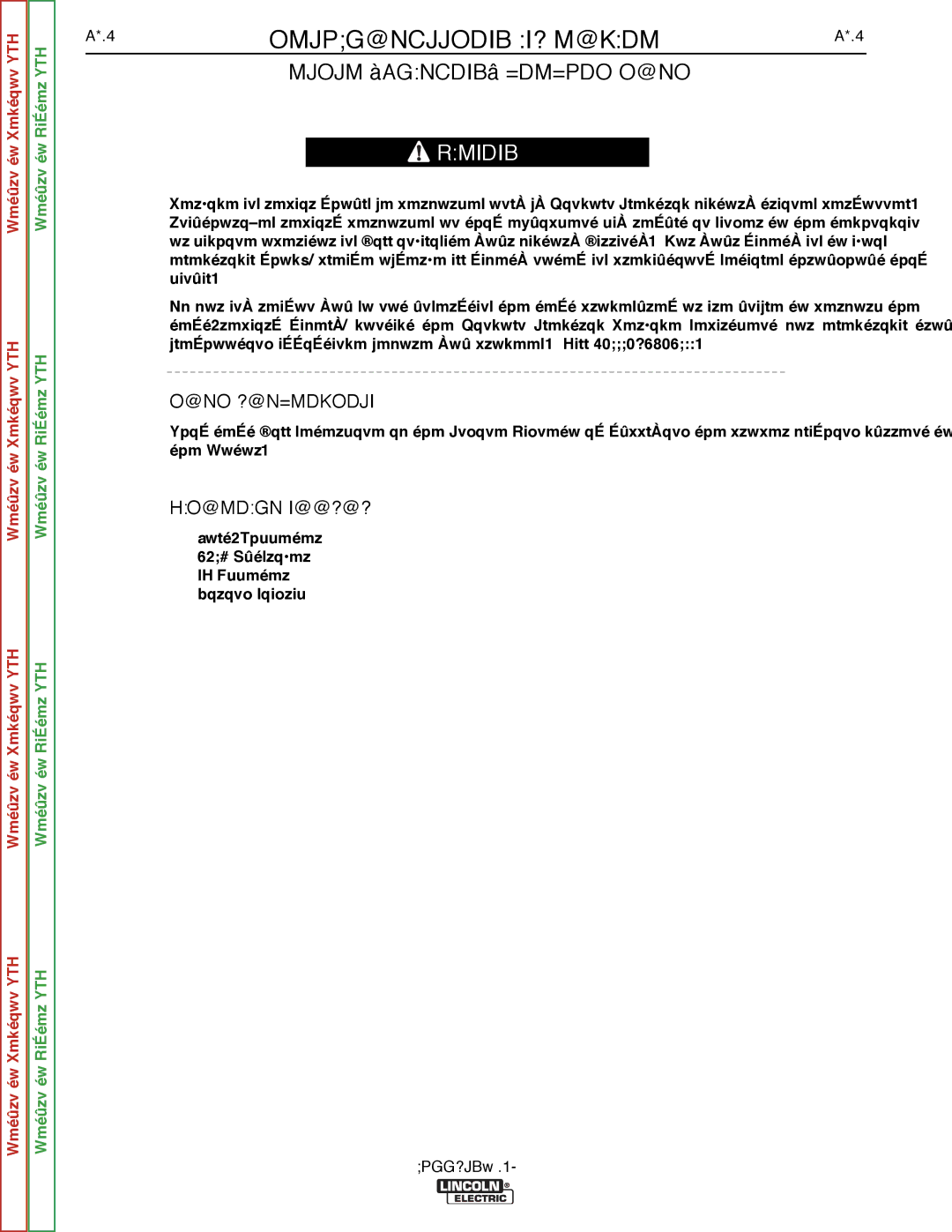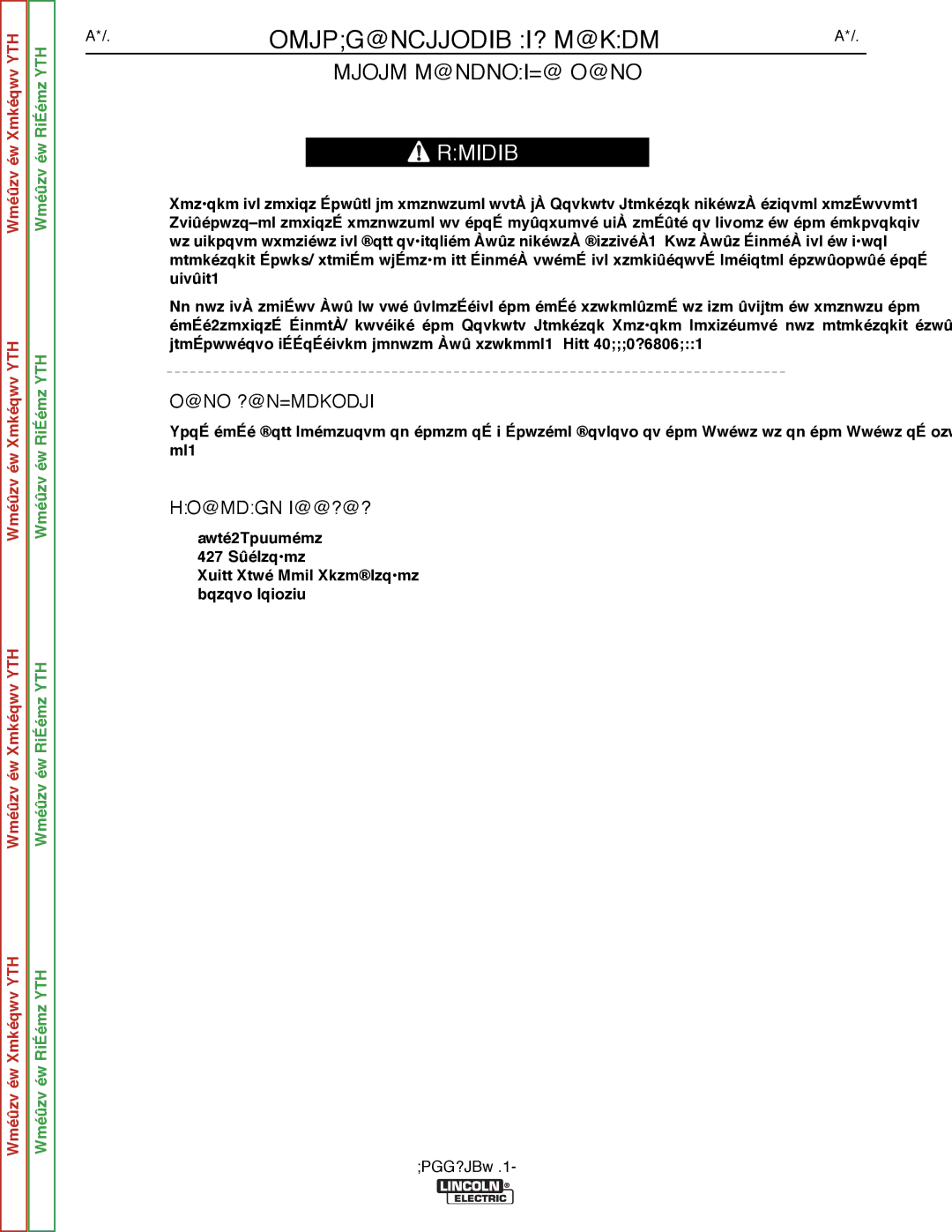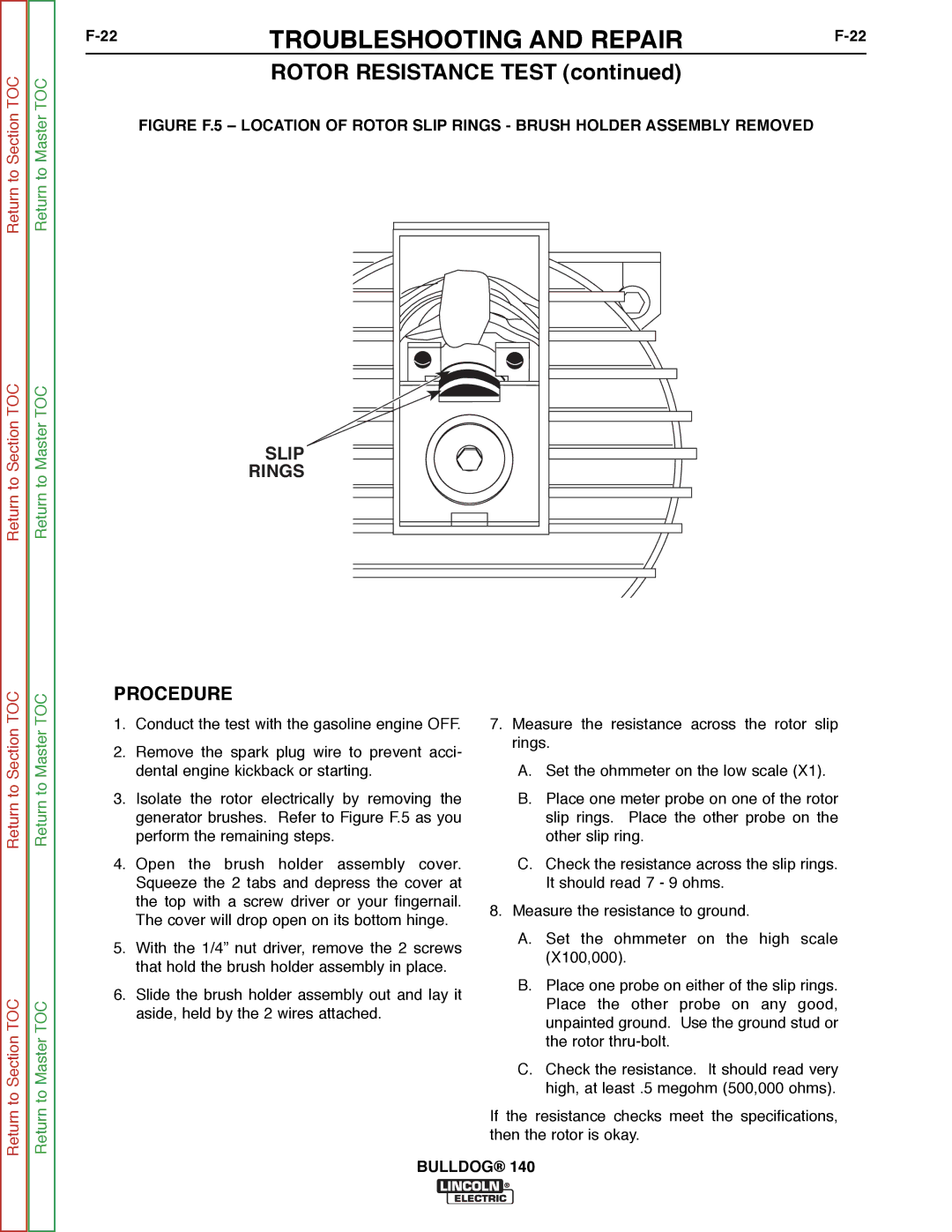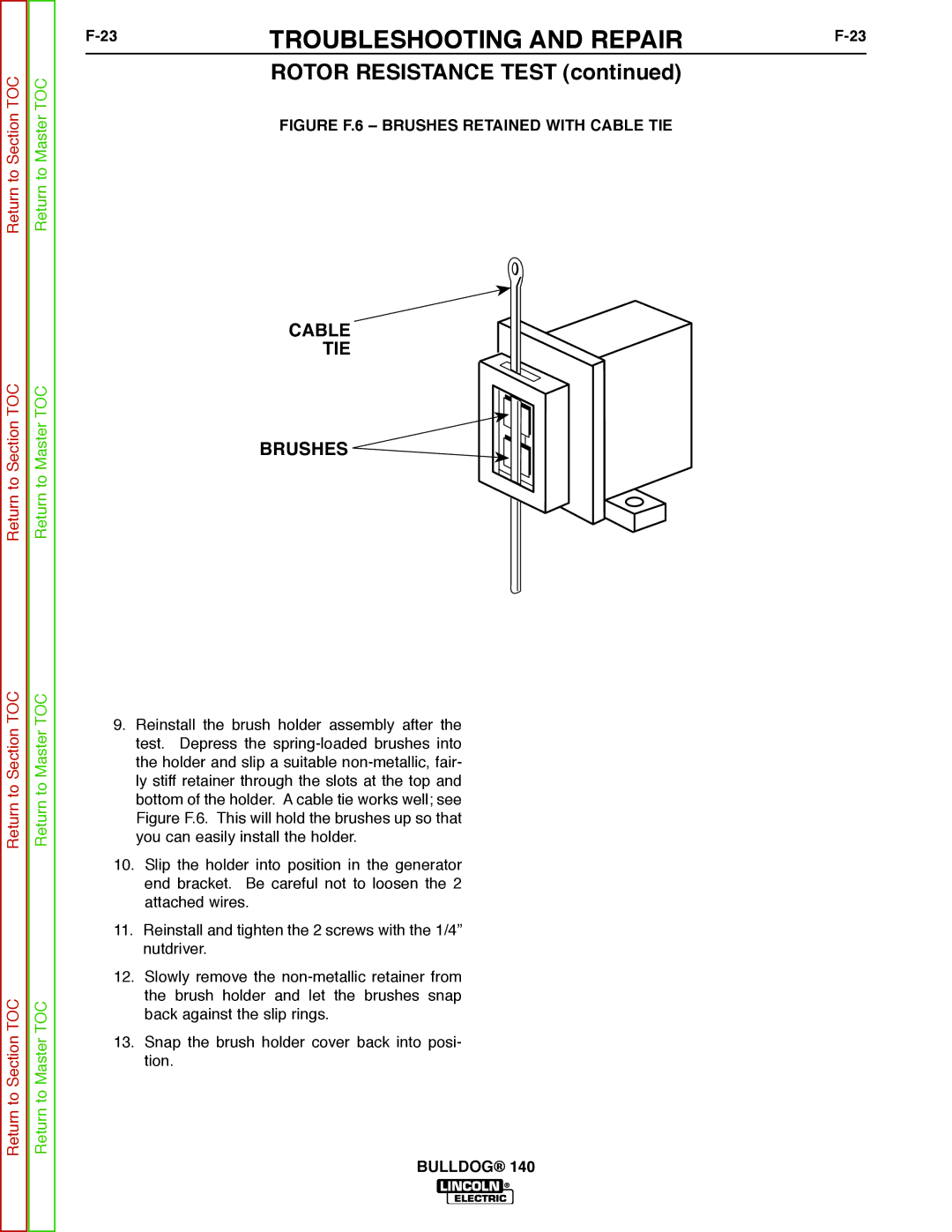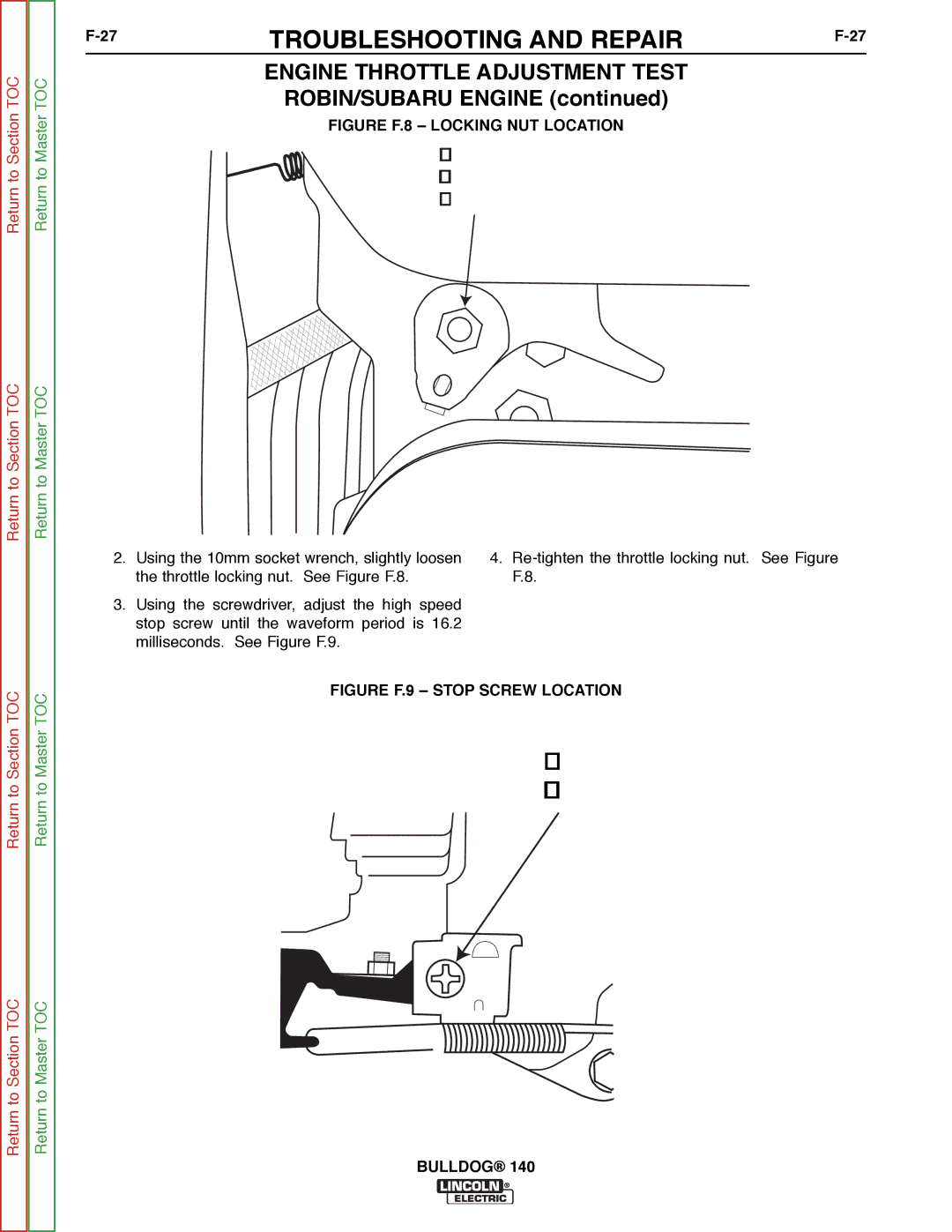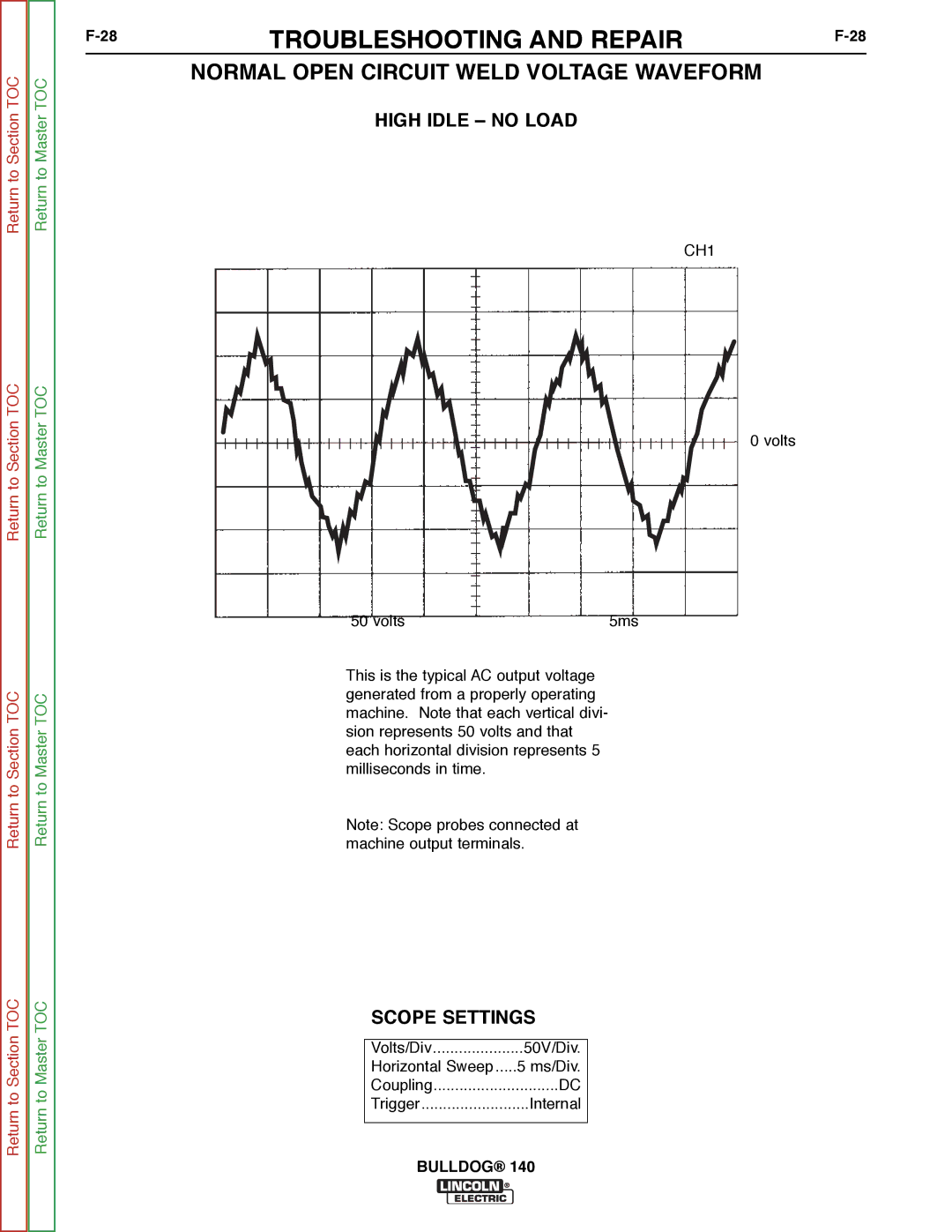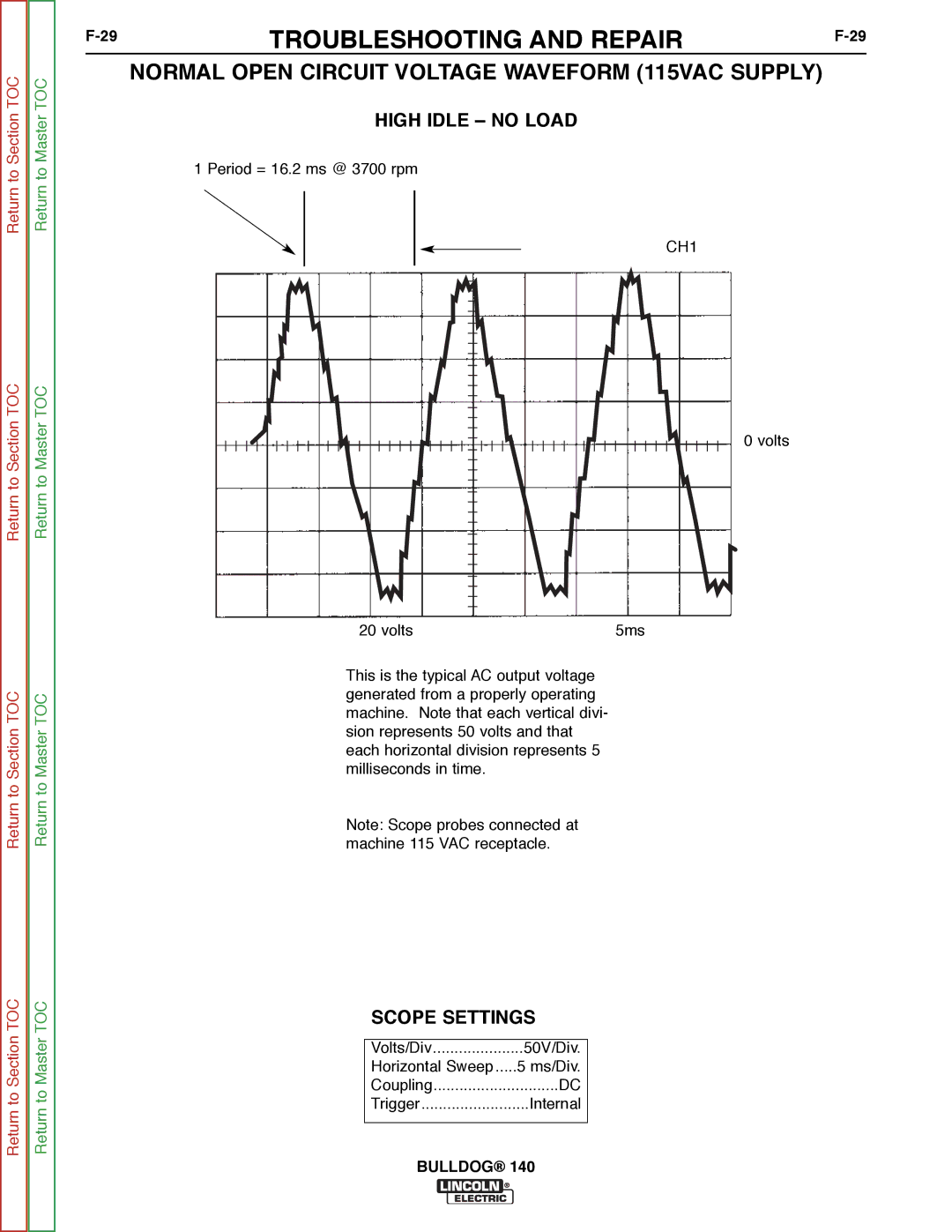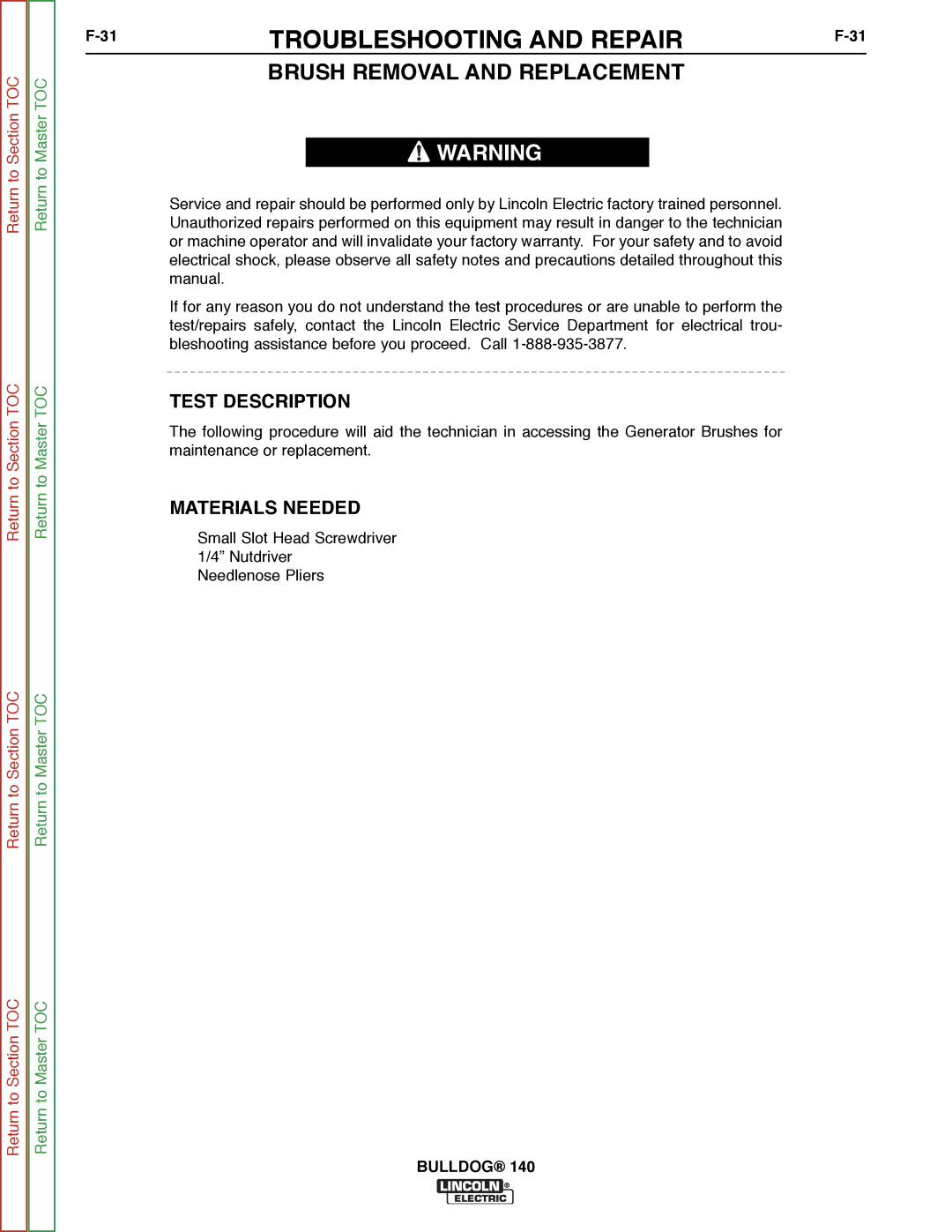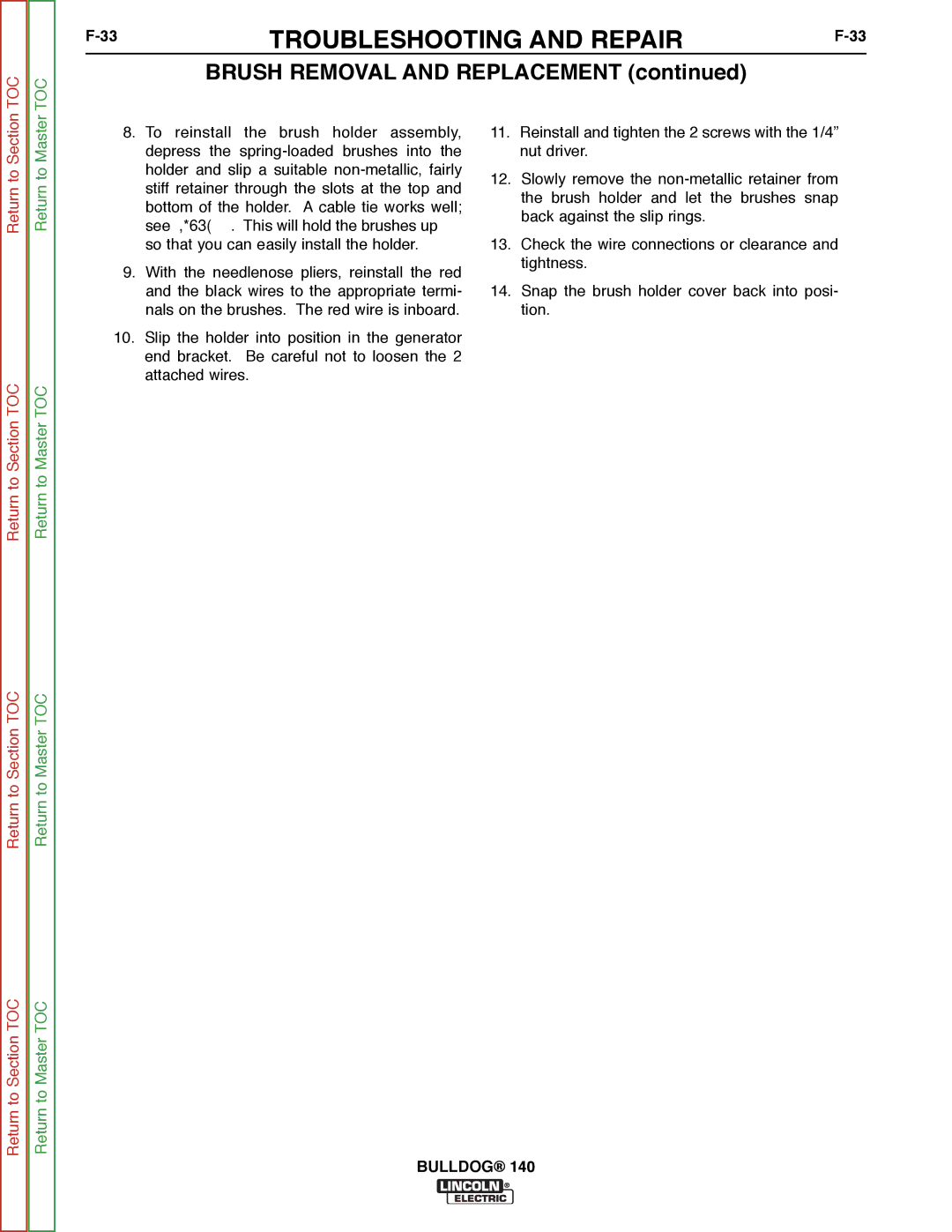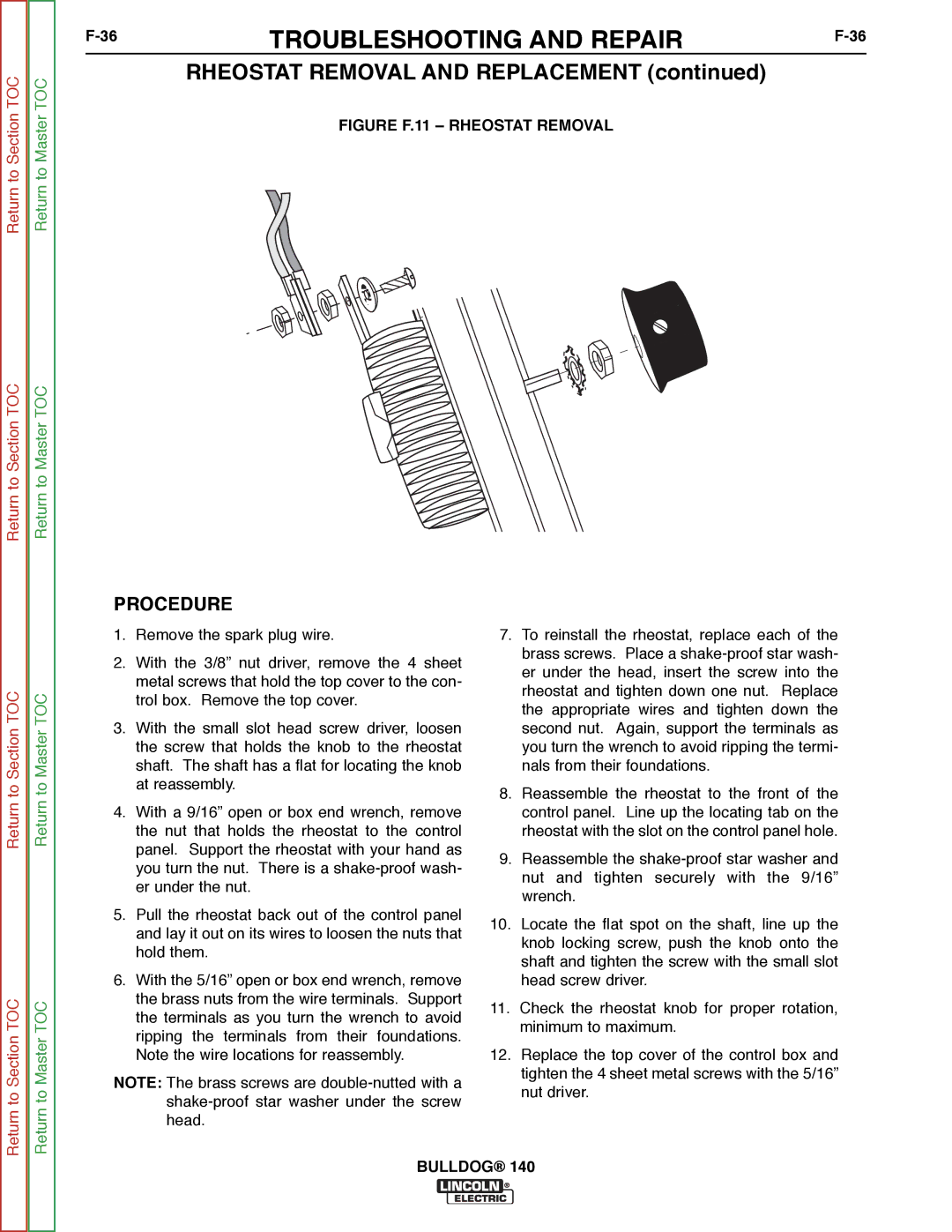
Return to Section TOC
Return to Master TOC
TROUBLESHOOTING AND REPAIR | ||
|
ROTOR VOLTAGE TEST (continued)
FIGURE F.1 – LOCATION OF LEAD 200A FOR ROTOR VOLTAGE TEST
Return to Section TOC
Return to Master TOC
LEAD 200A CONNECTION
GROUND STUD
Return to Section TOC
Return to Section TOC
Return to Master TOC
Return to Master TOC
PROCEDURE
1.With the 3/8” nut driver, remove the 4 sheet metal screws that hold the top cover to the con- trol box. Remove the top cover.
2.Start the machine and run it at high idle. Set the output control (rheostat) at the MAXIMUM or GENERATOR setting.
3.Set the volt/ohmmeter at the DC position.
4.Place the positive probe on lead 200A (Blue and Brown wires joined together) where it con- nects at the back of the rheostat. See Figure F.1 for location. Place the negative probe on the machine ground stud or any other good, unpainted ground.
5.Check the voltage reading on the volt/ohmme- ter. It should read 37.5 - 42.5 VDC.
6.If the voltage is low or not present, the genera- tor field circuit is not functioning correctly. Proceed with the Rotor Resistance Test. C1, R1, or D2 may also be faulty.
7.If rotor voltage is correct, the generator field is okay. Replace the top cover on the control box. Tighten the 4 sheet metal screws with the 3/8” nut driver.
